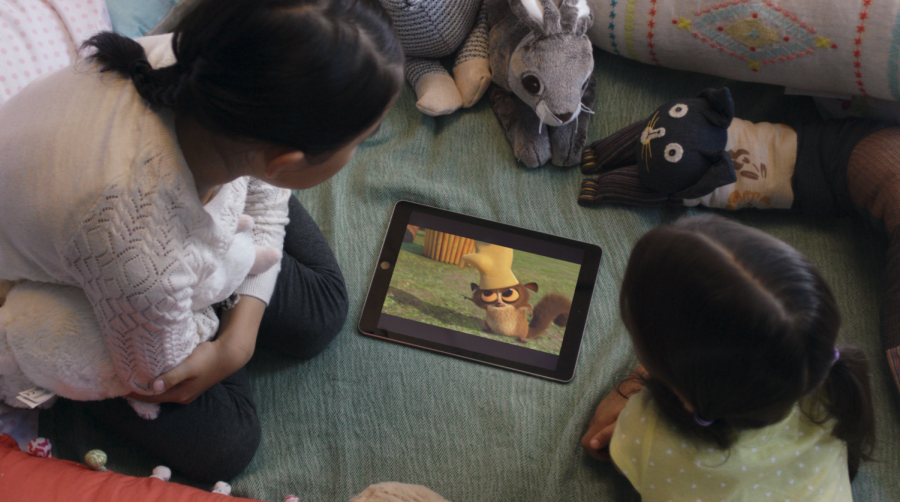With the rise of streaming platforms for movies and series, cable television is slowly becoming less prominent in media.
Cable television began in 1948 as specifically-placed antennas with wires attached leading to peoples’ TVs. Since then, more modern cable television has been adapted to allow for a better connection and quality.
However, streaming platforms like Netflix and Amazon Prime TV offer a different approach to watching television. These streaming services appeal to viewers because of the ability to watch an episode of a show from any season without commercials. With cable, viewers must catch the show at its scheduled programming time or record it and skip the commercials.
The convenience of streaming services is causing people to slowly back away from cable TV as their go-to viewing source. Highland Park mother Insha Luthera stopped watching live television in the last three years, and mainly watches Netflix or Amazon Prime now.
Luthera isn’t the only person slowly stepping away from cable. In 2019, about 1,740,000 subscribers of the United States’ largest pay-television providers were lost, according to the Leichtman Research Group. Not only is this a large net loss, but it almost doubled the loss of 975,000 subscribers in 2018.
A reason for this loss is the freedom to watch a show whenever you want that comes with streaming platforms.
“I like the convenience of being able to see something whenever it fits in my schedule,” Luthera said. “[Sometimes] that means I have a weekend where I can binge an entire series, then maybe I don’t watch anything for a whole month.”
Donna Small, a 76-year-old Highland Park grandmother, is also among the group that embraces streaming services instead of cable. She enjoys watching Netflix on her TV and iPad.
“I just think Netflix is the most wonderful thing because you can sit there and watch a series,” Small said. “There are no commercials, nothing interrupts, and you can just sit there for hours and watch the same show.”
As a member of an older generation, Small has seen changes in television from when she was younger. In the past, many families only had one television and had to agree on what to watch.
Today, streaming platforms often allow multiple viewers from the same account to watch from different devices simultaneously, which takes away the need to fight for control over access to a singular television.
In addition to changes in the number of household devices, Small has noticed a difference in the censorship in shows. She says shows now portray a more authentic picture of life and include more sensitive topics that would not have aired before.
Despite her positive attitude toward streaming services, Small says sometimes the more modern technology associated with them can be difficult to control.
“It’s taken me days [to learn how to use some new technology],” Small said. “I have to call the Dish people probably once a day to say ‘how do I do something?’ to get it like I want it.”
However, Small is learning how to handle her computer and other technology and appreciates the upgrade from when she was younger.
“I grew up with an old black dial phone and a party line, so the devices today I just think are wonderful,” Small said.
Members of the younger generations appreciate streaming services as much as the older generations, if not more. Today, younger children grow up watching shows and movies from streaming services more than from live television.
Junior Elle Thompson prefers to watch shows on Netflix rather than live or recorded television due to its easy accessibility and wide selection.
“In general I don’t watch a lot of TV, so when I do I want to be able to find something quickly,” Thompson said.
Another complaint that some viewers have is that more networks have started to create their own streaming services, such as Disney+, and with each platform comes different exclusive shows. Luthera often has to research where she can watch a certain show.
“I just wish there were only like 2 different streaming platforms versus so many,” Luthera said.
In addition to this, Luthera dislikes when she has to pay for a whole streaming service to watch one show.
“They will give you a teaser, like you can watch the first three for free, then you have to buy the rest of the season,” Luthera said.
The rare occasions where large numbers of people watch live television are for large events such as the Super Bowl or the Oscars because they don’t want to see spoilers of the event online.
For those who have not fully transferred to streaming services, recording shows is the next-best option, because they can fast forward through commercials. The only downside to viewers is they must wait on the network’s release center.
“I don’t have to wait until the next week when the next episode is going to come out,” Luthera said.
While streaming service giants are currently thriving, the streaming wars are just heating up. More and more companies are set to roll out new streaming services, turning it into a competitive industry. While it is unclear what exactly will happen to cable, there is no doubt the industry will continue to feel the effects of streaming services’ popularity.




